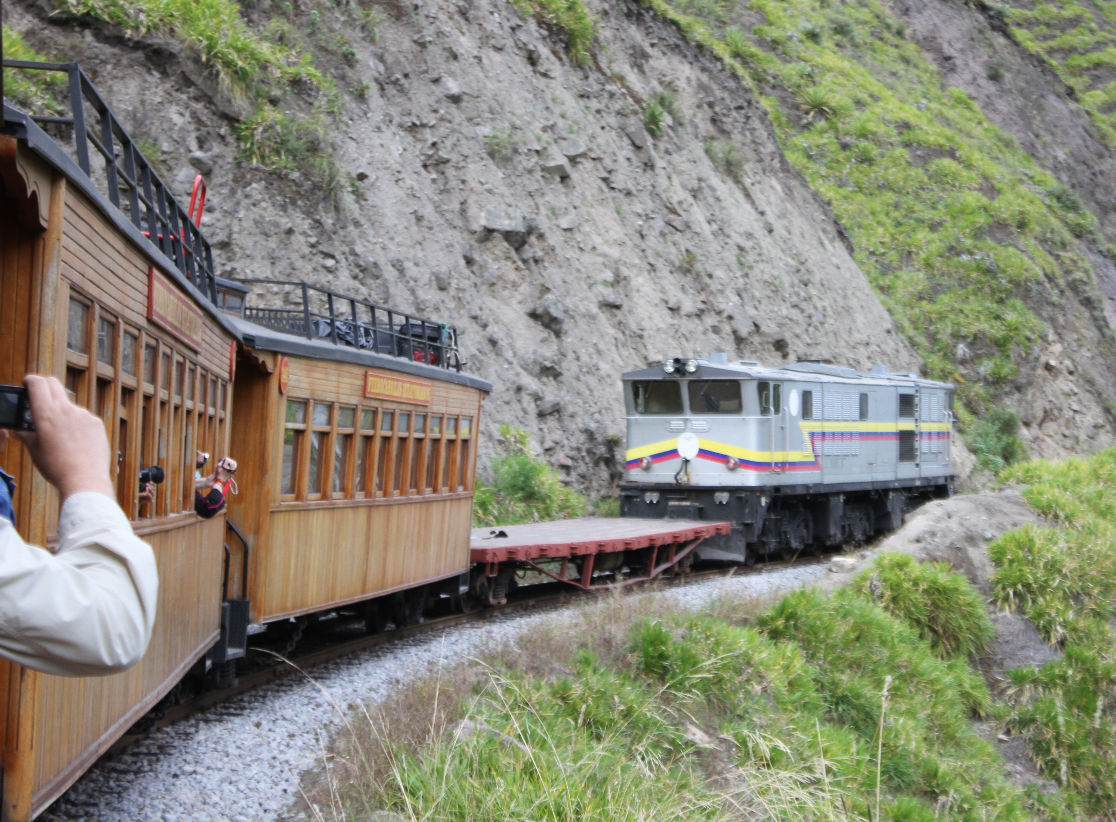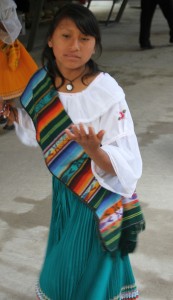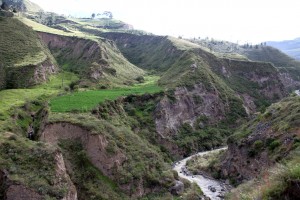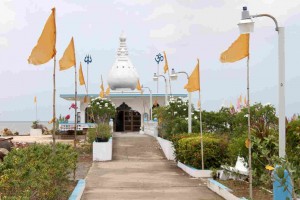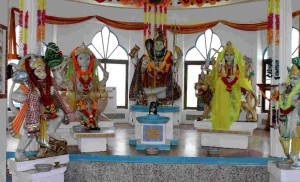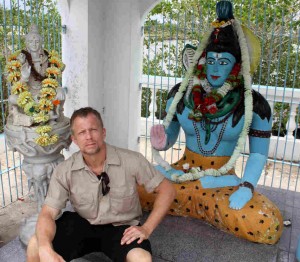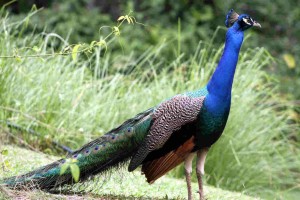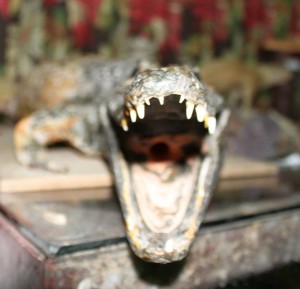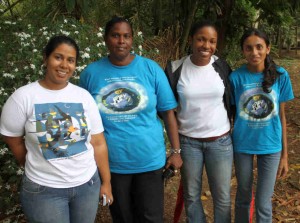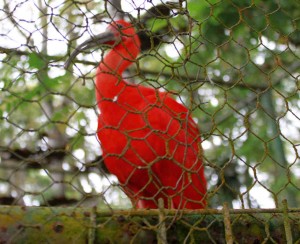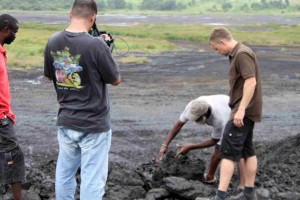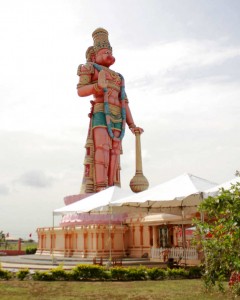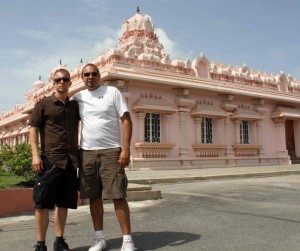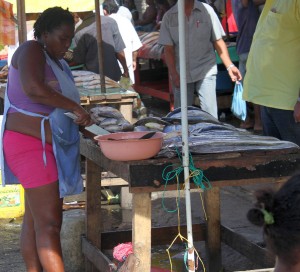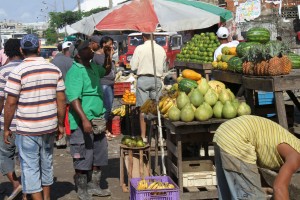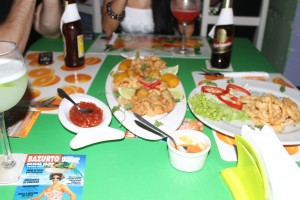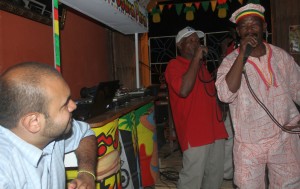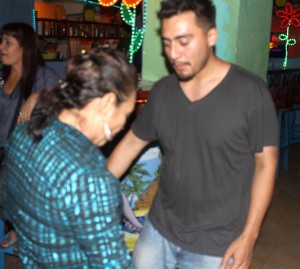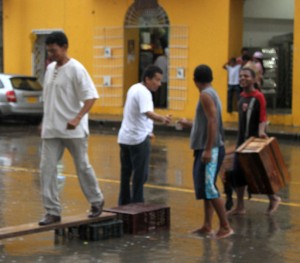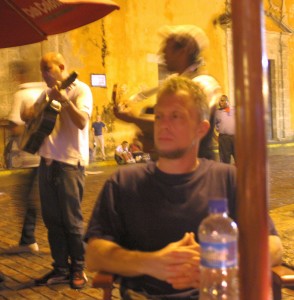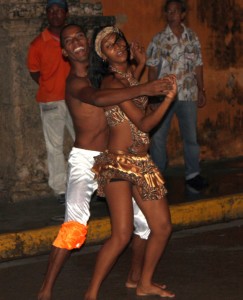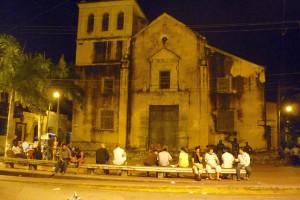After a stopover for lunch in Riobamba, we arrived in the small town of Alausí, about 4 hours by bus from Baños. The bus ride from Riobamba to Alausí was made much more entertaining when I made friends with Lupe, a little 4 year old Ecuadorian girl who was fascinated by my camera. I never saw her parents but she said her father was a few rows back.
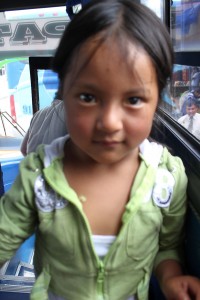
I am still amazed by the independence little children in Ecuador seem to have. I can’t tell you how many times I saw young kids, sometimes as young as 4 or 5 walking by themselves by the side of a busy highway. Contrast that with the U.S. where I swear I’ve seen kids the same age being pushed in strollers in Manhattan!
I didn’t complain when Lupe came up to share the ride with me. She was cute as a button and I taught her a few basic English words before she eventually got bored with me and my camera and she went over to our producer’s (Renzo) side of the bus, where she promptly fell asleep. She was still sleeping when we got off at Alausí, so I slipped a piece of candy in her little folded arms so that she’d have a sweet surprise when she woke up. I’m such a big old softy when it comes to kids, especially cute little Ecuadorian kids. Simply the cutest.
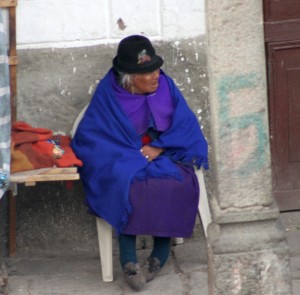
Alausí has a big indigenous influence and despite having the famous “Nariz del Diablo” or “Devil’s Nose Train” station it didn’t seem to have a lot of tourist infrastructure to speak of.
That being said, the people were friendly and the food at the local Chifa (Chinese restaurant) across the street from our hotel was good. You can get a good sense of Alausí in about 2 hours walking around town and if the altitude isn’t kicking your butt too bad, a great view of the city can be had from the lookout with the large San Pedro monument which towers over the town.
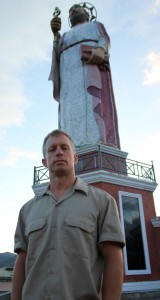
We woke up early to take the 1st Devil’s Nose Train which was scheduled to depart at 8AM and arrive back in town at 10:30AM. Since we didn’t have tickets (the ticket office was closed when we arrived the day before) , we had to wake up really early to buy our tickets at 7AM at the ticket office. Buying tickets was by far the worst part of the train trip, it took 45 minutes and we were the 2nd group of people in line. Maybe there “system was down”, but it killed any chance of us getting breakfast (and me, my much needed coffee fix) beforehand.
The Devil’s Nose Train is probably one of the most famous and infamous tourist sites in Ecuador. If you research on the web or guidebooks before you go, you’ll get an amazing amount of outdated, misinformation. This stems from the fact that the train used to depart from Riobamba for a much more grueling all day train ride and not that long ago, tourists could ride on top of the cars. Of course, this is dangerous and eventually someone died so that no longer is allowed. A round trip train ride from Alausí is only 2.5 hours and that includes a 50 minute stop in the town of Sibambe for lunch.
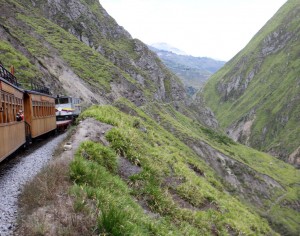
As of this writing, the train currently runs from Alausí 3 times a day (8A, 11A, 1PM) Tuesday-Sundays and the cost is $20 U.S. per adult. You can buy tickets at the ticket office in Alausí or at the old train station in Riobamba before you get there. Evidently weekends and holidays are pretty packed so you’re advised to get your tickets as early as possible.
You’ll also get mixed reviews about the train ride itself, some saying it’s a tourist trap and that the views are just as great by bus. Not so. The train ride overlooks cliffs and valleys in a way no bus ever could (or that you would want) and because the speed is slower (and the ride smoother) it’s much easier to get video or photos and appreciate the beautiful surrounding landscape.
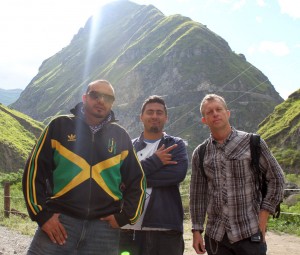
The train was built in 1901 and many people died building it and when you take the ride you understand why. The terrain is precarious. I can’t imagine the amount of manpower needed to build around the mountains at that time. At times the train is so close to the side of a mountain that if you stick your hand outside the train car, you’ll lose it.
There are two types of train cars. Buses that are retrofitted to ride on train tracks and the kind we thankfully took, which are refurbished train cars from back in the heyday of the route when it was used for transportation and not just a diversion for tourists.
When we arrived in Sibambe we were welcomed with folkloric dancers and surprise, surprise you could buy souvenirs from the local artisans. We also toured the museum and had a light lunch before we headed back.
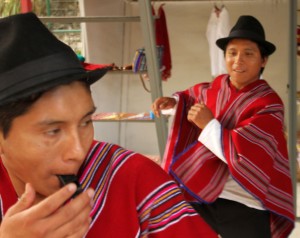
The train ride is not that adrenaline pumping excitement you’ll get in Baños from some of the adventure sports and I admit I was disappointed we couldn’t ride on the roof, but the views are stunning nonetheless and it’s really a good way to feel like what travel was like in these parts not that long ago. If you have the time and are in the area, I wholeheartedly recommend the ride.
We hopped on a bus to Cuenca (another 4 hours) and realized when we arrived that we had left our tripod (valued at $250 U.S.) on the train. Getting it back proved to be an adventure but Marcos the manager of the Train was so cool and eager to help us out. We wired him some fare money to put it on a bus to Cuenca and we got it back the next day. Big gracias to Jose Luis (our guide who found the tripod and turned it in) and Marcos for their help.
Below is a small video clip to give you some idea of what the train ride was like.

